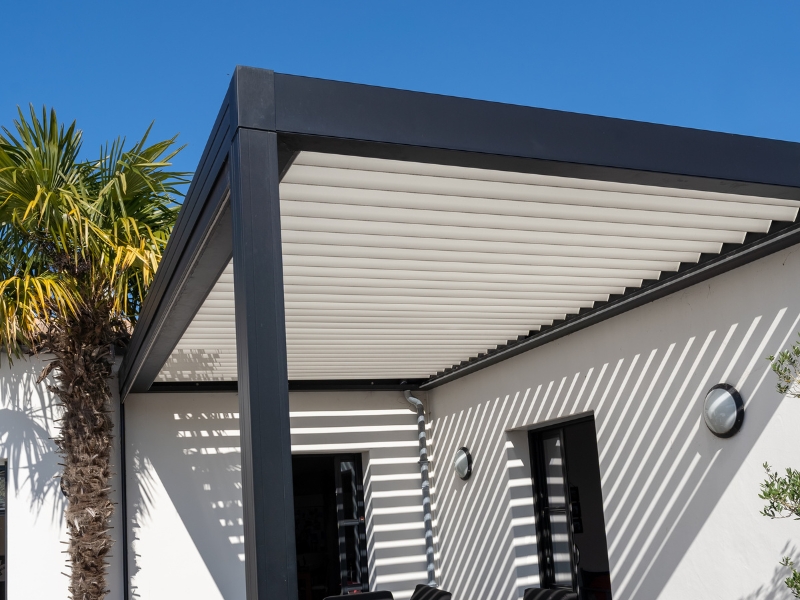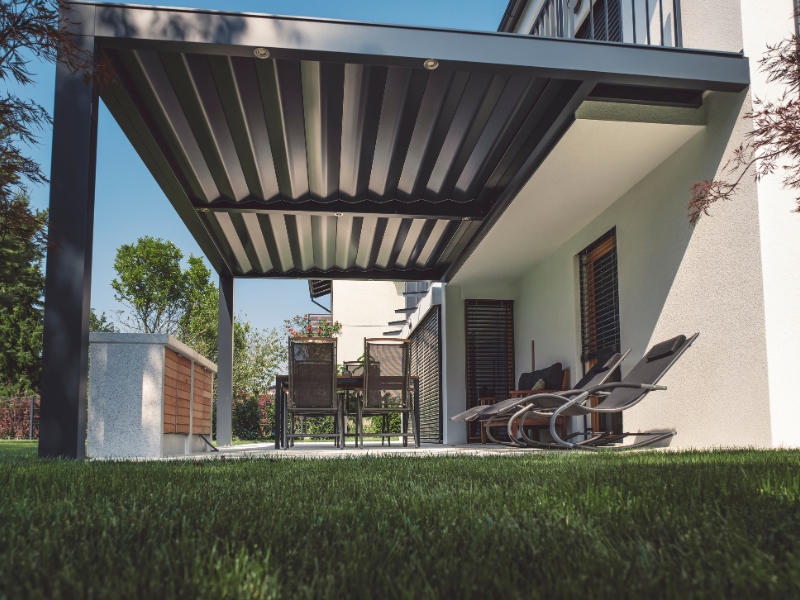Choosing the right pergola isn’t just about looks—it’s also about safety, stability, and suitability for your home. That’s especially true with attached pergola kits, where poor choices can cause ongoing headaches. If you’re weighing up wall-mounted options, you’re probably juggling a few competing priorities: looks, budget, council compliance, and how it’ll stand up to wild Aussie weather.
This blog cuts through the guesswork. It tackles common problems with installation, wind resistance, and dodgy expectations about what wall-mounted pergolas can really do. You’ll also see which features make a difference when space is tight, and how to keep councils happy. So, before you bolt anything to your brickwork, take a moment to understand what really matters when choosing the right kit.
What problems can arise during pergola installation?
Installing an attached pergola might sound like a straightforward project, but it’s rarely that simple. One of the most common pitfalls is underestimating the structural demands on the wall to which you’re attaching. If your wall isn’t reinforced or properly checked, things can go pear-shaped fast. Other avoidable problems include:
- Bolts and fixings that aren’t corrosion-resistant
- Brackets that don’t suit the wall material—timber, brick, or rendered block
- Support beams that sag over time due to incorrect spans
- Drainage or roofline conflicts that disrupt water flow
These issues don’t just cause inconvenience—they can turn into expensive repairs and safety risks. Too often, eager DIYers rush in without understanding what their structure needs. That’s where choosing the best pergola solution for your wall makes all the difference.
Why do attached pergola kits fail in harsh weather?
Weather in Australia isn’t just unpredictable—it can be brutal. From scorching UV to cyclonic winds, your pergola needs to do more than just look good. Many kits on the market aren’t rated for harsh conditions. Some even fail basic tests for wind uplift and load capacity. Typical failure points include:
- Lightweight aluminium beams that flex under stress
- Inadequate anchoring systems that pull away from the masonry
- Poor roof design that traps wind rather than dispersing it
- UV-sensitive materials that warp or discolour
These aren’t just theoretical risks—they’re backed by insurance data and tradie experience. The truth is, not all kits are built to handle Aussie extremes, and when they give out, you’re left with both a safety hazard and a costly fix. To avoid these outcomes, focus on:
- Wind-rated kits that meet AS/NZS 1170 standards
- Roof pitches that reduce lift in gusts
- Galvanised or stainless fixings suited to coastal exposure
How do misconceptions about wall-mounted pergolas cause issues?
Many homeowners believe that a wall-mounted pergola is “easier” than a freestanding one. But this mindset often leads to design shortcuts. When kits are treated like “set-and-forget” installations, crucial steps get missed. Common misconceptions include:

- Believing the wall alone will support all the weight
- Thinking that all exterior walls are structurally equal
- Assuming all kits suit all home designs
- Overlooking how heat and water affect junctions
The problem isn’t just poor planning—it’s the false confidence that comes from online tutorials and generic guides. That’s why many people get caught out halfway through the build. A solid fix here involves enhancing shade with wall-mounted pergolas that are engineered specifically for your wall type. When done correctly, they offer great aesthetics without cutting corners.
Which features make attached pergola kits more reliable?
The best attached kits aren’t just about materials—they’re about smart design choices that anticipate real-world conditions. You’ll want more than just “durability”—you’ll want clarity around how each part contributes to long-term performance. Look for these must-have features:
- Adjustable wall brackets for accurate levelling.
- Pre-treated timber or powder-coated aluminium for corrosion resistance.
- Integrated gutter systems that won’t clog or backflow.
- Clear span beams that reduce the need for extra posts.
- Roof sheeting rated for both sun exposure and hail impact.
Here’s a quick comparison of key kit features:
| Feature | Basic Kits | High-Quality Kits |
| Beam Material | Untreated pine | Galvanised steel |
| Wind Rating | Not specified | Certified to AS/NZS |
| Roof Type | Flat polycarbonate | Angled Colorbond® |
| Wall Brackets | Fixed positions | Adjustable, load-rated |
| Guttering | Add-on, separate | Integrated flow design |
Poor roof design and basic fixings often reduce reliability, even when kits look similar on the surface.
Can attached pergola kits suit homes with limited space?
Absolutely—but only if you choose wisely. One major perk of wall-mounted kits is that they leave more floor space open. This makes them ideal for townhouses, narrow lots, and tight urban backyards.
Still, poor selection can backfire. Overhangs that block light, bulky frames that dominate the yard, or setups that ignore access points can turn a simple project into a daily frustration. If space is tight, focus on:
- Slimline profiles that hug the house.
- Adjustable heights to match eaves and fascia.
- Custom span options that avoid oversized posts.
- Modular layouts for angled or corner placement.

That’s why more homeowners are choosing pergola kits for small yards with tailored specs instead of off-the-shelf models. It’s a smart way to gain shade and structure without making the area feel boxed in.
Do local councils regulate the construction of attached pergolas?
Yes—and ignoring this step is a fast track to future drama. Every local council has its own rules about what you can attach, where you can build, and how much space you can cover. In many cases, attached structures are more strictly controlled than freestanding ones. Common council regulations include:
- Maximum projection from the dwelling
- Required boundary setbacks
- Roof drainage and stormwater requirements
- Structural engineering certification
Some councils even require development approval if the pergola is attached to a listed or multi-storey dwelling. Your best move is to review local planning rules for fixed outdoor structures to avoid nasty compliance issues down the line. Skipping permits might save time in the short term, but the fines and rebuild orders are rarely worth it.
Final thoughts on choosing the right attached pergola kits
Choosing the right kit means looking past surface-level features. It means understanding how materials, local rules, weather exposure, and even wall structure affect long-term outcomes. You want a pergola that adds value, not one that cracks, sags, or fights your council’s fine print.
If you’re still weighing up design options, you can explore wall pergola designs with Unique Pergolas to find the one that suits your wall type and layout. It’s a practical way to narrow down options without the guesswork.


